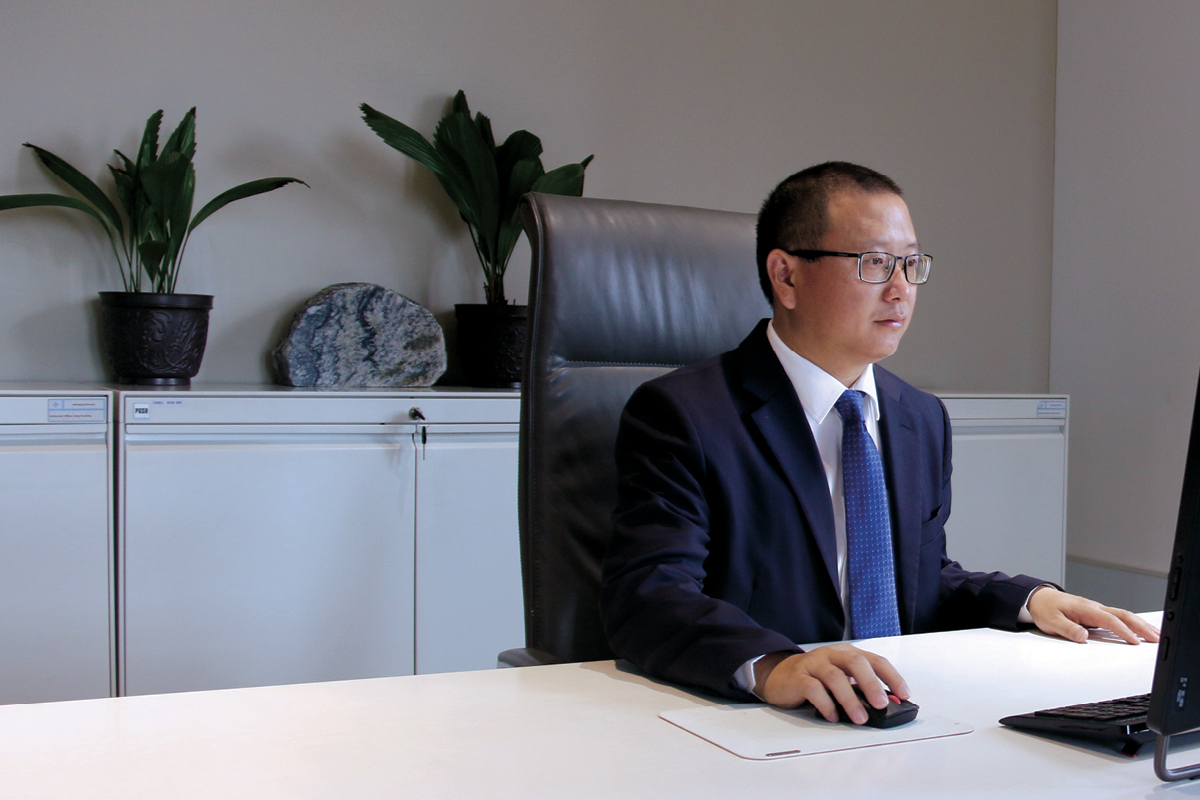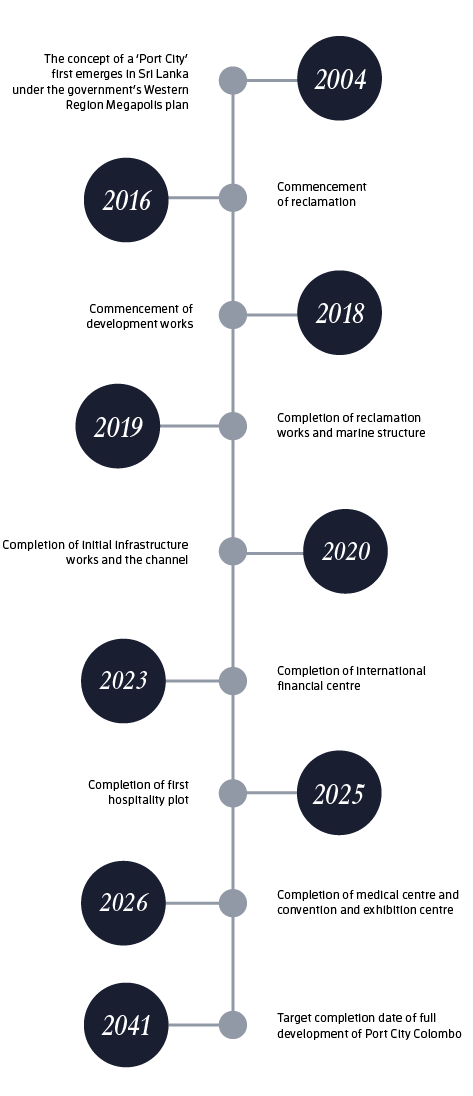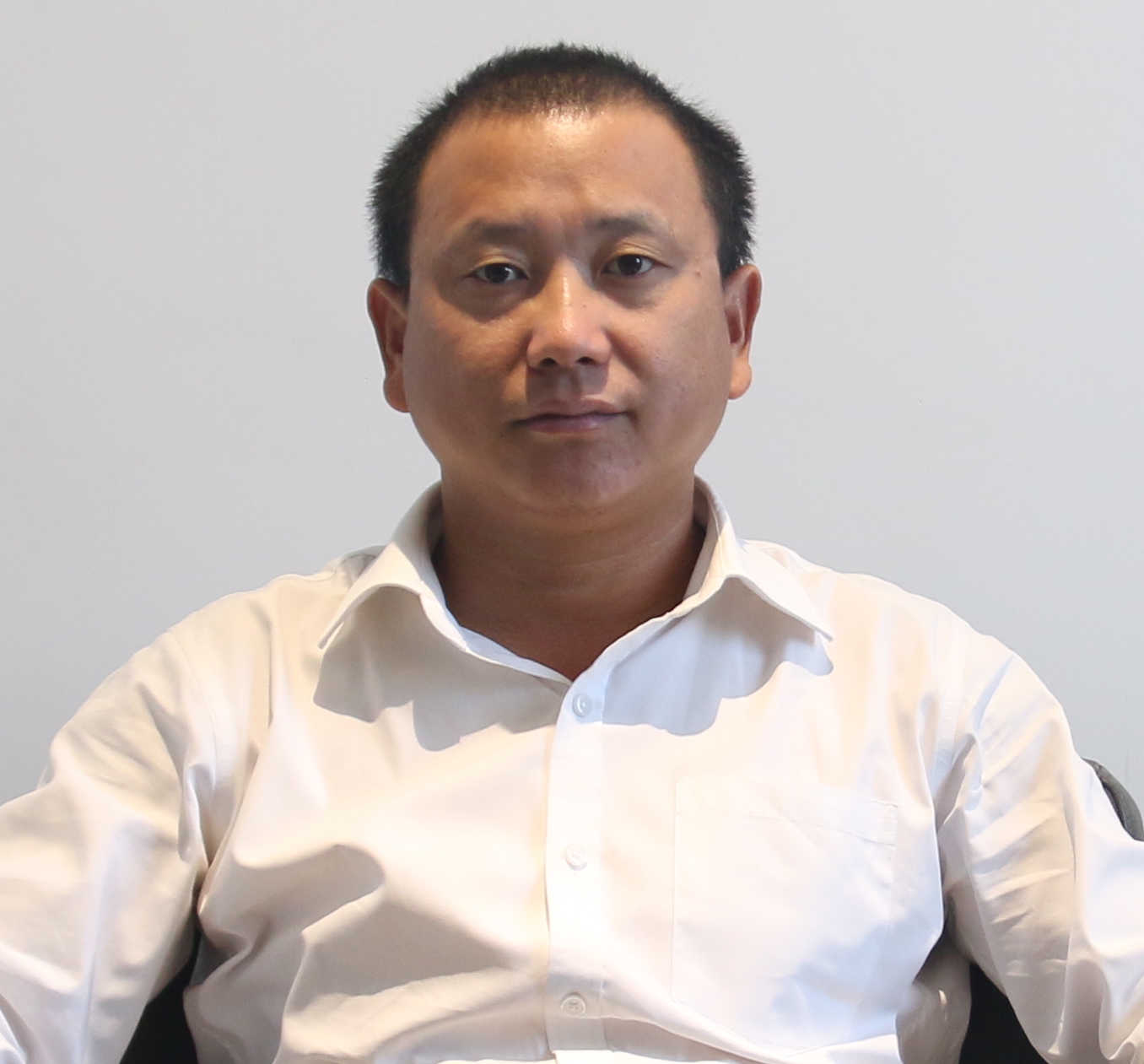CHEC Port City Colombo (Pvt) Ltd, a wholly-owned subsidiary of China Harbour Engineering Company Ltd (CHEC), signed an agreement with the Government of Sri Lanka in August 2016 to resume building the Port City, now called the Colombo International Financial City (CIFC), following a one-year suspension. Upon full completion in 2041, the city is expected to bring US$15 billion into the Sri Lankan economy.
It is the largest foreign direct investment in the country’s history, as well as being a symbol of advancement of the strategic cooperative partnership between China and Sri Lanka.
CHEC Port City Colombo (Pvt) Ltd’s Managing Director Houliang Jiang is the man tasked with ‘building a world-class city for South Asia’ – one that will span 269 hectares of reclaimed land from the sea. What will this new city look like, and how has it been progressing? The CEO Magazine had the opportunity to speak with Houliang and delve further.
The CEO Magazine: What are your favourite features of Port City Colombo?
Houliang: Port City Colombo has a big portion of green area for public
use. Spacious and widespread parks and waterfront facilities will make the city a great place for people to live, work and play. There are five precincts: the financial district, marina, international island, central park living, and island living. This makes this mini city holistic in itself.
Spacious and widespread parks and waterfront facilities will make the city a great place for people to live, work and play.
However, our master plan is to make it seamless with the old Colombo Fort. In fact, the recent Urban Design Ideas competition, in which some of the world’s top design firms participated and which was hailed by the Sri Lanka Architects Association as one of its kind for the country, focused on this very concept. The Port City’s vision for the future is to make this new city the most attractive and desirable city to live in, not only for Sri Lanka and South Asia but also for the rest of the world.
How do you approach your relationships with your clients and suppliers?
If by ‘clients’ you mean investors in the Port City who will be into property development, then in the last year we have been in contact with investors in South Asia, South East Asia and the Far East especially. Our sales and marketing team is expanding our footprint globally day by day, with the assistance of Jones Lang LaSalle.

We follow local and international standards in dealing with the supply of goods and services for the project. When it comes to local supply of raw materials, we have stringent rules and regulations to follow. The materials have gone through an environmental impact assessment (EIA) and are monitored on a day-to-day basis by more than 20 government agencies. Internally, we have local and international experts and consultants who assist us.
Tell me about your journey leading up to becoming managing director of CHEC Port City Colombo (Pvt) Ltd.
I graduated from Central South University of China in the year 2000 and chose to join CHEC. Shortly after that in 2001, I was assigned to Sri Lanka. In 2007, after completing six years in Sri Lanka I was employed by another Chinese engineering company in the US. I was working there until 2010, after which I got the opportunity to come back to Sri Lanka.
One of the key reasons why I was assigned the position of managing director of CHEC Port City Colombo (Pvt) Ltd, l believe, is my prior Sri Lankan experience. Port City Colombo is essentially a Sri Lankan project and I am more than familiar with local conditions and the business environment.
This is not the first development project in Sri Lanka you’ve been involved in since your return, is it?
That’s right. On returning to Sri Lanka, I was assigned the position of project manager of Mattala Rajapaksa International Airport development in Hambantota. Overall, the work was quite challenging as there were many areas of this project I was not initially familiar with, including navigation, telecommunications, meteorology and lighting systems.
But we brought in the right consultants and experts and were able to successfully complete the project to the appreciation and satisfaction of all concerned. Port City Colombo is not a lot different from the airport project, in terms of being challenging. It is another new avenue for CHEC to explore, and I believe they considered me the right man for the job.

What do you enjoy most about your career in engineering?
I enjoy the sense of accomplishment that comes with the successful completion of a project. As a
civil engineer, it is heartening to know that our hard work has helped improve quality of life – for example, the way people travel on newly built highways or bridges, or live in modern, intelligent housing. Port City Colombo is such a case in point, where an entire new city would contribute towards improving the way people live, work and play. This is the most fulfilling part of my work from an engineering point of view.
How did you end up in engineering?
Was it just a natural interest, or was it a more winding path?
It wouldn’t be correct to say I ended up in engineering. I may hold an engineering degree, but the projects I have handled to date have been far more complex and required knowledge in a number of fields other than engineering.
For example, Port City Colombo relates to many different aspects such as design, finance, master planning, construction, business and investment promotions, city operation and maintenance. Also, with the Mattala Airport experience, that project dealt with many areas outside of engineering as well. Though some aspects of these projects are connected to engineering, my work involves dealing with a number of different areas. Therefore, the focus is far from being limited to engineering.
What measures are you taking to ensure that the project has approval from the Sri Lankan people?
Sri Lanka is known for its environmental awareness and strict environment protection regulations. CHEC has been working in Sri Lanka since 1998 and is clearly aware of this fact. Therefore, we give high priority to environmental protection and sustainability. We have engaged the services of a number of Sri Lankans who are familiar with the regulations and approval procedures.
We have also reached out to the best law firm in Sri Lanka to carry out due diligence research for this project. Our official partners, the Ministry of Megapolis and Western Development and the Urban Development Authority, are highly professional in this aspect and have greatly assisted with our compliance with local regulations. We then jointly appointed a world-class engineering consultancy firm to oversee the project.
The transparent and regular communications ensure that the necessary approvals are acquired on time. We have also consciously driven our CSR efforts toward looking at the needs of neighbouring communities, and partnered with local agencies to do research, which has helped us to come
up with sustainable solutions that we then can actively support.
What major regulatory challenges have you encountered in the time you’ve been heading this project?
It’s obvious that the Sri Lankan Government has ambitions of implementing rapid economic and
political reforms that would enhance the country’s business environment.
However, although the coalition government often agrees on the broad picture regarding economic development, it differs on specific policies. Even when a policy is made, it can take some time to come into effect. In addition, rising tax rates and limited financing capacity of the local banks are seen as headwinds for implementing the project.
However, when dealing with Port City Colombo, we understand the magnitude of the project could be daunting for a country and economy the size of Sri Lanka, so we have to be patient and understanding in our approach. By following the processes, we have been able to foster win–win situations for our partners, as well as creating benchmarks for other investors in Sri Lanka.
When is the project scheduled for completion? Are you on target?
There are two stages of completion: First, the reclamation work will be completed by 2019; and second, the development of the city, which would probably be completed by 2041. Currently, 45 per cent of the reclamation work is done, and that is in line with the construction plan.
Reflecting on your career so far, has there been a favourite project in which you’ve been involved?
The Mattala Airport project is the most challenging one that I experienced, but it was also my favourite. It was a completely new type of project. As Sri Lanka’s second international airport, it has great potential and it has been built taking into consideration all modern aviation requirements.

The airport will prove to be a great asset for the future as it would open up the southern part of the island for development not only in tourism but in connectivity for its people. The whole process of development in Sri Lanka is broadening and moving towards an inclusive economy from the centre to the peripheries. The Mattala Airport is not only a part of this strategy, but can be seen as a harbinger of things to come.
What activities do you enjoy doing in your spare time, and do these activities help with your approach to work?
Of all sports, jogging and golf are my favourites. In a way, these two sports are similar in that they both stimulate my thinking. I can give deep thought to the project I am working on and organise information in my mind while indulging in both these activities. These sports have a calming effect on me and allow me undisturbed time to consider different opinions of my colleagues on important issues and make the right decisions.
You’ve mentioned how you wouldn’t have been able to do any of this on your own. Tell me
about the support team that is backing you.
The people I have worked with have been, and still are, a great support and inspiration to me. We have Chinese, Sri Lankans and other international colleagues working shoulder to shoulder to complete these projects. Some of us are far away from our homes, but in spite of a few hiccups, we have accomplished and continue to accomplish amazing results.
This brings to mind just one thing: the cooperation and understanding we have with Sri Lanka. The friendship between our countries that goes back many centuries is something that cannot be broken.

